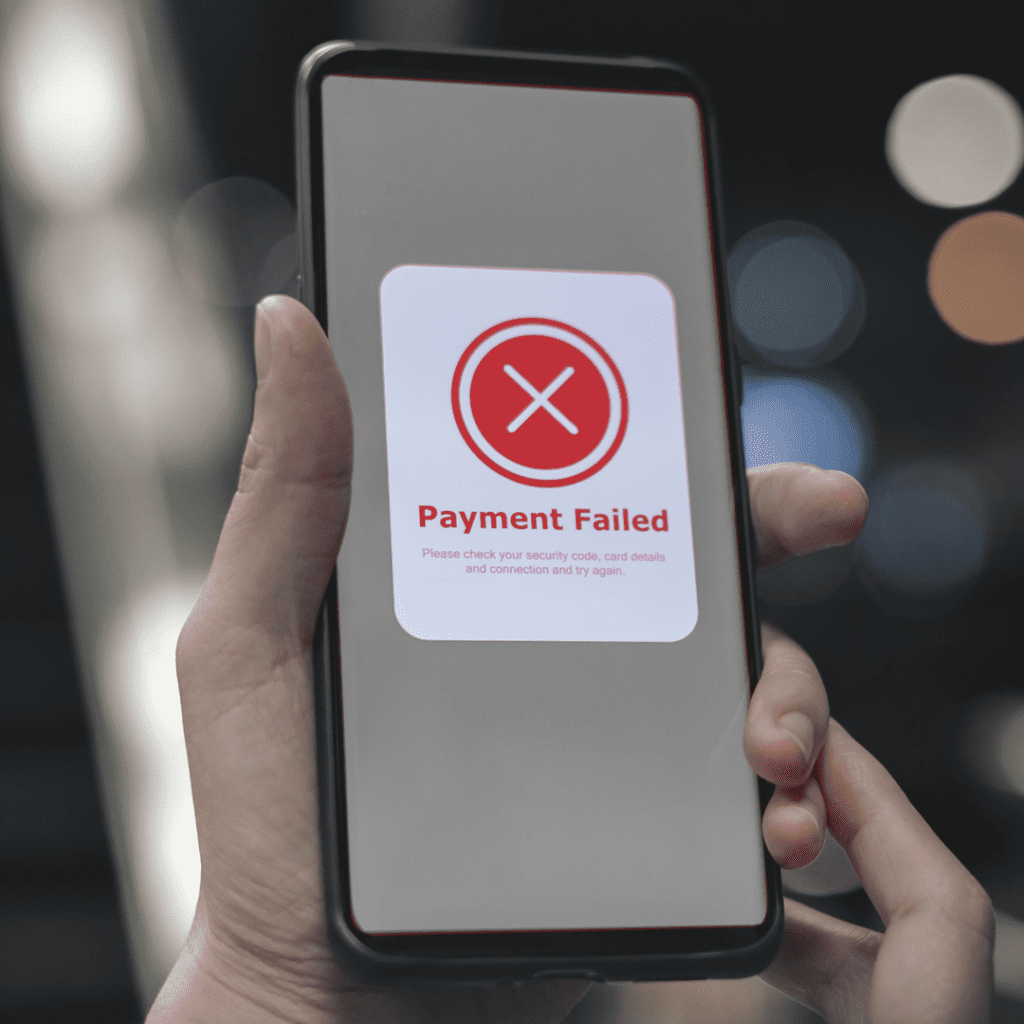When you’re running a subscription or SaaS business with recurring payments, having some payments fail each month is to be expected. There’s a huge problem in the payment ecosystem because card-issuing banks decline many legitimate transactions in their attempts to prevent fraud. It’s painful, but true. This leaves subscription businesses scrambling to figure out the best ways to recover failed payments and save customers.
According to Capital One Shopping Research, there were 54.8 B credit card transactions in the United States in 2022* and research by Visa and Mastercard pegs the credit card failure rate at 15%. That’s a huge amount of money that needs to be recovered.
The Top 3 Reasons Why Payments Fail
When a payment fails, the payment processor returns an error code, one out of hundreds of possibilities. This code usually indicates the reason for the failure, but sometimes it’s a vague Do Not Honor (Code 05) or an Other Error (Code 06), which is a generic error that doesn’t explain why the payment failed.
Out of all the possible known reasons why a payment could fail, the top three are:
- Insufficient Funds
- The most common reason why payments fail and the easiest one to recover.
- The most common reason why payments fail and the easiest one to recover.
- Risk Profile
- Some merchants are seen as risky based on their product or service, such as cannabis vendors or gambling sites, making online transactions more challenging for them.
- Some merchants are seen as risky based on their product or service, such as cannabis vendors or gambling sites, making online transactions more challenging for them.
- Technical Reasons
- Many issues can trigger a payment failure inside the payment network, such as an expired card or a temporarily blocked card.

Failed payments interrupt the customer journey and can lead to negative feelings about your company.
The Importance of Failed Payment Recovery
Failed payments are the top cause of involuntary churn, which happens when the customer wants the product or service they signed up for, but they are blocked by a false decline. This interrupts the customer journey and can lead to negative feelings about the company. To maintain valuable customer relationships and reduce this churn, subscription-based companies need a retention plan that includes an effective failed payment recovery strategy.
Customer retention is especially important when the economy is changing, and customers are cutting back on their spending. You don’t want to be in a position where a failed payment turns out to be just the opportunity a customer needs to end their subscription. All the hard work and investment you’ve put into getting customers and creating a positive customer experience are at risk if your customer payments aren’t successful and you don’t keep the customer long enough to at least earn out their cost of acquisition.
Failed payments also impact any LTV calculations you might be doing because they can cause an abrupt end to your customer relationship if they’re not recovered. For example, a subscriber you may have expected to be with you for 8 months could disappear after only 4 months if their payment fails and isn’t successfully recovered.
All the hard work you’ve put into creating a positive customer experience is at risk if your customer payments aren’t successful.

The Top Reasons Why In-House Recovery Fails
When companies realize how much money they are losing to failed payments, many of them decide to do the recovery themselves. It’s a natural first impulse, but in-house recovery isn’t always practical or effective.
Here’s why you shouldn’t do it on your own:
- Lack of internal resources and expertise
- The high cost of hiring the necessary data scientists and software engineers makes in-house payment recovery programs cost prohibitive for most businesses.
- The high cost of hiring the necessary data scientists and software engineers makes in-house payment recovery programs cost prohibitive for most businesses.
- Wasting the best chance for recovery
- Using a sophisticated failed payment recovery solution while the decline is still fresh ensures the highest recovery rate. Relying on an in-house customer support team instead of a proven technical solution means you’re missing the opportunity to achieve the best recovery results.
- Using a sophisticated failed payment recovery solution while the decline is still fresh ensures the highest recovery rate. Relying on an in-house customer support team instead of a proven technical solution means you’re missing the opportunity to achieve the best recovery results.
- Lack of analysis
- Data from millions of transactions is needed to understand the most effective billing retry patterns. Companies not in the business of payment recovery simply don’t have access to this type of information.
- Data from millions of transactions is needed to understand the most effective billing retry patterns. Companies not in the business of payment recovery simply don’t have access to this type of information.
- Risk of customer loss
- It’s not just one month’s transaction that’s lost when a payment fails — the entire customer relationship is in jeopardy. This risk of churn and the cost to your business is simply too high to do recovery on your own.

To improve retention, it’s important to recover failed payments in a way that doesn’t harm the customer relationship.
Failed Payment Recovery Best Practices
The objective for any recovery solution should be to achieve a high recovery rate while preserving customer satisfaction and achieving maximum retention following recovery. How you recover a failed payment can mean the difference between a customer that stays with you for months to come and one that leaves because of a bad brand experience.
A company with recurring billing might have a collections team on hand to help recover failed payments, but customer outreach puts the customer relationship at risk. Most customers aren’t even aware there’s a problem with their payment unless they’re contacted and involving them in the recovery process unnecessarily gives them the opportunity to churn.
To improve retention, it’s important to recover failed payments in a way that doesn’t harm the customer relationship. You can do this by using a recovery solution that works directly with the payments system — the issuing bank that declined the payment — so that the customer never knows their payment failed and isn’t involved in the recovery process. This type of behind-the-scenes recovery should always be the first step taken because it quickly achieves the highest recovery results.
Sometimes a payment can’t be recovered without customer involvement, such as when the credit card has expired or has been lost or stolen. In this situation, strategic, empathetic communications are needed to motivate the customer to provide new credit card details. But these communications must be carefully crafted to ensure customer cooperation because any language that puts the customer on the defensive could reduce their willingness to solve the problem and cause your relationship to end prematurely
Remember, a customer is still a customer even when their payment fails, so providing a great customer experience is vital to retention. The quality of the customer experience is just as important as the recovery rates you achieve.
Do you need help recovering failed payments? Speak with one of our revenue and recovery experts today to get started.
*https://capitaloneshopping.com/research/number-of-credit-card-transactions/

